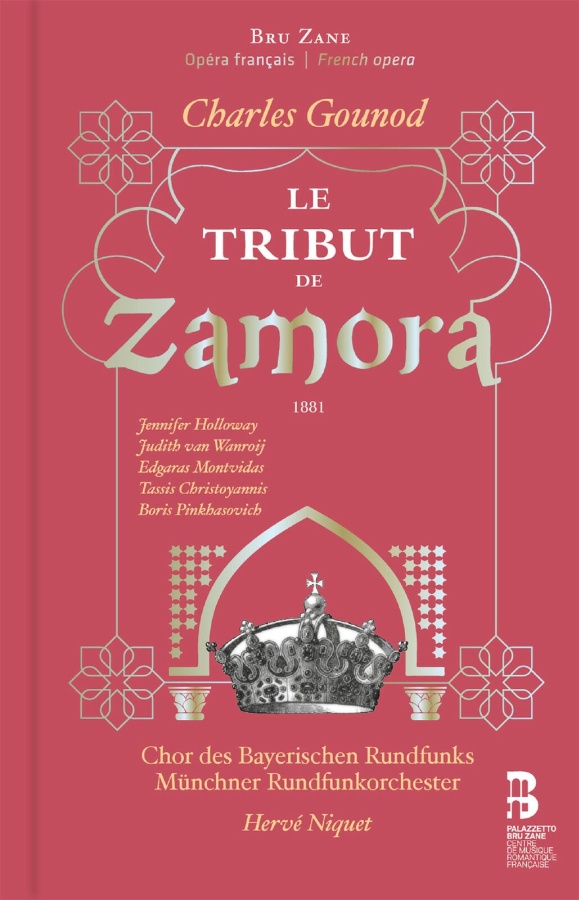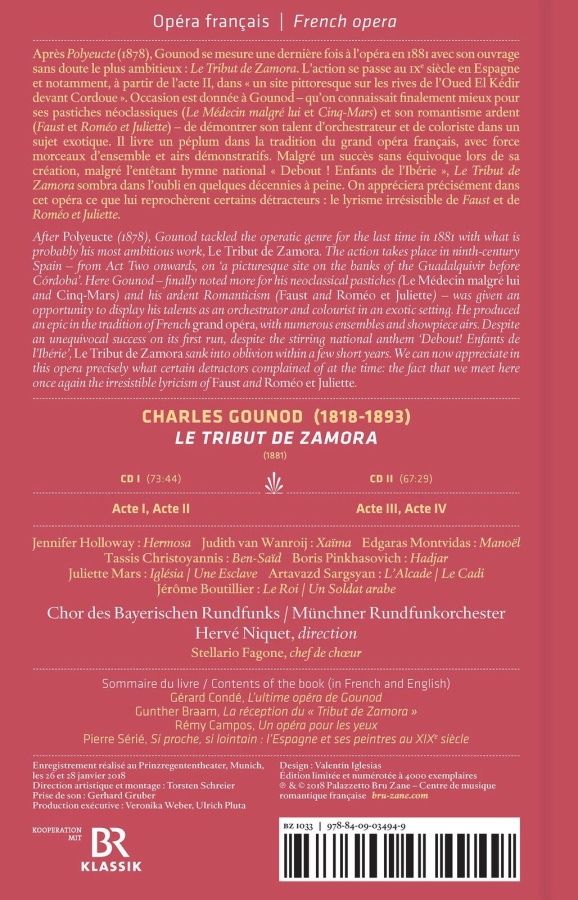
classical music distribution


(Produkt nie został jeszcze oceniony)
kompozytor
Gounod, Charles
tytuł
Gounod: Le Tribut de Zamora
wykonawcy
Niquet, Hervé;
Münchner Rundfunkorchester
Münchner Rundfunkorchester
nr katalogowy
BZ 1033
opis
After Polyeucte (1878), Gounod tackled the operatic genre for the last time in 1881 with what is probably his most ambitious work, Le Tribut de Zamora. The action takes place in ninth-century Spain – from Act Two onwards, on ‘a picturesque site on the banks of the Guadalquivir before Córdoba’. Here Gounod – finally noted more for his neoclassical pastiches (Le Médecin malgré lui and Cinq-Mars) and his ardent Romanticism (Faust and Roméo et Juliette) – was given an opportunity to display his talents as an orchestrator and colourist in an exotic setting. He produced an epic in the tradition of French grand opéra, with numerous ensembles and showpiece airs. Despite an unequivocal success on its first run, despite the stirring national anthem ‘Debout! Enfants de l’Ibérie’, Le Tribut de Zamora sank into oblivion within a few short years. We can now appreciate in this opera precisely what certain detractors complained of at the time: the fact that we meet here once again the irresistible lyricism of Faust and Roméo et Juliette.
(2CD)
nośnik
CD + książka
gatunek
Muzyka klasyczna
producent
Bru Zane
data wydania
02-11-2018
EAN / kod kreskowy
9788409034949

(Produkt nie został jeszcze oceniony)
cena 129,00 zł
lubProdukt na zamówienie
Wysyłka ustalana indywidualnie.
Darmowa wysyłka dla zamówień powyżej 300 zł!
Darmowy kurier dla zamówień powyżej 500 zł!
sprawdź koszty wysyłkiProduktu jeszcze nie zrecenzowano, chcesz być pierwszy?
Klienci, którzy kupili ten produkt, kupili również
Mendelssohn, Felix, Tchaikovsky, Piotr
Felix Mendelssohn & Piotr Tchaikovsky: Violin Concertos, Pablo de Sarasate
MDG 642 1797-2
Pozostałe płyty tego kompozytora
różni kompozytorzy
Oeuvres pour la main gauche vol. 5, Transcriptions de Paul Wittgenstein
AVR 150215
różni kompozytorzy
Gounod: Walpurgisnacht Ballet / Ravel: Sonatine & Las Valse / Bizet: Symphony in C
BAC 139
Pozostałe płyty tego wykonawcy
Napisz recenzję dla: Gounod: Le Tribut de Zamora
Zapytaj o dostępność produktu
Twoje zapytanie:
Odpowiemy na adres:
Produkt został dodany do koszyka

Gounod, Charles
Gounod: Le Tribut de Zamora
1 szt












































